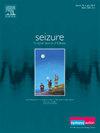Functional connectivity network based on scalp electroencephalogram in juvenile myoclonic epilepsy
IF 2.8
3区 医学
Q2 CLINICAL NEUROLOGY
引用次数: 0
Abstract
Background
Advances in neuroimaging technology have identified epilepsy as a disorder of brain network dysfunction. Previous research has confirmed alterations in the brain functional network of patients with juvenile myoclonic epilepsy (JME). However, studies investigating brain network changes in JME patients under different intervention conditions remain scarce.
Methods
The manuscript included 32 JME patients who met the ILAE diagnostic criteria, and 36 long-term video EEG records were collected and analyzed. Patients were classified into three groups according to their drug treatment status and reaction: the drug-naive group, the seizure-free group and the poor-controlled group. Based on the brain networks derived from electroencephalogram (EEG) data, network analysis, equivalent dipole source location analysis and Mendelian randomization analysis were conducted. Multiple hypothesis T-Tests were used to assess the difference in various indicators of brain networks enriched for strong functional connectivity (ρ > 0.7) between different patient groups.
Results
Significant differences were found in brain network diameter, shortest path length, transmissibility, and subgroup count between the drug-naïve and seizure-free groups. In contrast, no differences were detected between the drug-naïve and poor-controlled groups. K-means clustering achieved 89 % specificity and 83 % sensitivity in classifying JME patients.
Conclusion
(1) The topological characteristics of brain networks show significant associations with clinical symptom severity in JME patients, demonstrating their value as potential biomarkers for monitoring treatment response. (2) While group-specific variations exist, the overall brain network topology remains indistinguishable across all JME patients, indicating a stable disease-related reorganization. (3) Observed hemispheric lateralization in brain network topology highlights potential targets for neuromodulatory interventions.
基于头皮脑电图的青少年肌阵挛性癫痫功能连接网络研究
神经成像技术的进步已经确定癫痫是一种脑网络功能障碍的疾病。先前的研究已经证实了青少年肌阵挛性癫痫(JME)患者脑功能网络的改变。然而,关于不同干预条件下JME患者脑网络变化的研究仍然很少。方法选取32例符合ILAE诊断标准的JME患者,收集36例长期视频脑电图记录进行分析。根据患者的药物治疗情况和反应将患者分为三组:药物初始组、无癫痫组和控制不良组。基于脑电图数据得到的脑网络,进行了网络分析、等效偶极子源定位分析和孟德尔随机化分析。采用多重假设t检验来评估强功能连通性丰富的脑网络的各种指标的差异(ρ >;0.7)。结果drug-naïve组与无发作组在脑网络直径、最短路径长度、传播率、亚群数等指标上均存在显著差异。相比之下,drug-naïve组和控制不良组之间没有发现差异。结论(1)脑网络的拓扑特征与JME患者的临床症状严重程度有显著的相关性,表明其作为监测治疗反应的潜在生物标志物的价值。(2)虽然存在群体特异性变异,但所有JME患者的整体大脑网络拓扑结构仍然无法区分,表明存在稳定的疾病相关重组。(3)观察到的大脑网络拓扑半球侧化突出了神经调节干预的潜在目标。
本文章由计算机程序翻译,如有差异,请以英文原文为准。
求助全文
约1分钟内获得全文
求助全文
来源期刊

Seizure-European Journal of Epilepsy
医学-临床神经学
CiteScore
5.60
自引率
6.70%
发文量
231
审稿时长
34 days
期刊介绍:
Seizure - European Journal of Epilepsy is an international journal owned by Epilepsy Action (the largest member led epilepsy organisation in the UK). It provides a forum for papers on all topics related to epilepsy and seizure disorders.
 求助内容:
求助内容: 应助结果提醒方式:
应助结果提醒方式:


